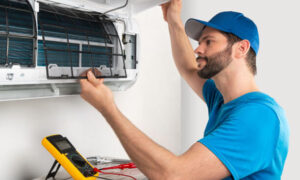Your heating and cooling system is one of the most important things you should think about when making your home comfy. Keeping your home at a comfortable temperature is important for your general comfort, whether it’s cold outside in the winter or very hot outside in the summer. Not only will the right heating and cooling system keep you comfortable, but it can also save you money on your energy bills and make the air better. This guide will help you find the best heating and cooling systems for your home so that you can be as comfortable as possible.
- Understand Your Heating and Cooling Needs
The first step in optimizing comfort in your home is understanding your specific heating and cooling needs. Different homes have different requirements depending on factors like size, layout, insulation, and location. For example, larger homes with more rooms will likely require more powerful systems than smaller spaces. Additionally, your geographical location will determine how often you need heating and cooling systems to perform at their peak.
Assessing your home’s heating and cooling requirements will help you select the right system that fits your needs. It’s important to take into account the climate in your area as well as any areas that may require more attention due to poor insulation or unique features like high ceilings or large windows.
- Choosing the Right Heating and Cooling System
There are several options to choose from when it comes to heating and cooling systems. Heat pumps, remote mini-split systems, and central heating and air conditioning are a few of the most loved. Let’s explore each of these options:
- Central Heating and Cooling Systems: This is the most traditional and widespread option for residential homes. It involves a central unit that is connected to ductwork that distributes heated or cooled air throughout the house. Central HVAC systems are highly efficient when properly maintained and offer the advantage of providing uniform temperature control throughout the entire home.
- Ductless Mini-Split Systems: These are ideal for homes that don’t have existing ductwork. Inside, there are one or more air mover units that are placed on the walls. The compressor unit is outside. They are especially helpful for homes with more than one zone because they let you control the temperature in each room separately. This helps save energy by only cooling or heating the rooms that need it.
- Heat Pumps: Heat pumps are versatile systems that can both heat and cool your home. They work by transferring heat from the outside air into the home during the winter and reversing the process to expel heat during the summer. Heat pumps are highly energy-efficient, making them a popular option for moderate climates.
Choosing the right heating and cooling system is about matching the specific needs of your home with the most efficient technology available. A professional HVAC technician can help guide you through this process, ensuring you choose a system that maximizes your comfort while reducing energy consumption.
- Ensure Proper Insulation and Sealing
If your home isn’t well insulated, even the best heating and cooling systems may not be able to keep the temperature comfortable. In the summer, cool air can leave, and in the winter, heat can escape. This makes your system work harder and use more energy. For the best performance, you need to make sure that your attic, walls, and floors are properly insulated.
Along with insulation, closing air leaks around doors, windows, and ducts will also make your heating and cooling system work better. This step helps keep drafts away and keeps the cooled air inside your home, keeping you comfy without putting too much stress on the system.
- Regular Maintenance for Peak Performance
Once you have a good heating and cooling system in place, it’s important to keep it in good shape so it works at its best. This includes regular checks, cleaning, tune-ups, and inspections, as well as changing filters and seeing how much gas is in the system. If you keep up with maintenance, your system will use less energy, last longer, and not need as many expensive fixes.
In addition to professional maintenance, you can also take simple actions like cleaning your vents, changing filters every few months, and checking for any unusual noises or odors that may indicate a problem.
- Consider Smart Thermostats
One of the easiest ways to maximize comfort while keeping energy costs low is by installing a smart thermostat. These devices learn your schedule and adjust your heating and cooling settings accordingly, ensuring your home is always at the ideal temperature when you’re there. You can also use an app on your phone to handle a smart thermostat from afar, so you can make changes even when you’re not at home.
Additionally, many smart thermostats are compatible with home automation systems, allowing you to integrate them with other smart home devices for added convenience and efficiency.
Conclusion
There’s a lot more to making your home more comfortable than just changing the temperature. You can make your home comfortable all year by picking the right heating and cooling system, making sure there is enough insulation, and doing regular repairs. Adding current technology like smart thermostats can make things even more comfortable and save even more energy. Getting a good system that works with your home will make a big difference. It will save you money and keep you warm in the winter and cool in the summer.































